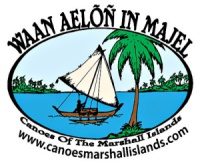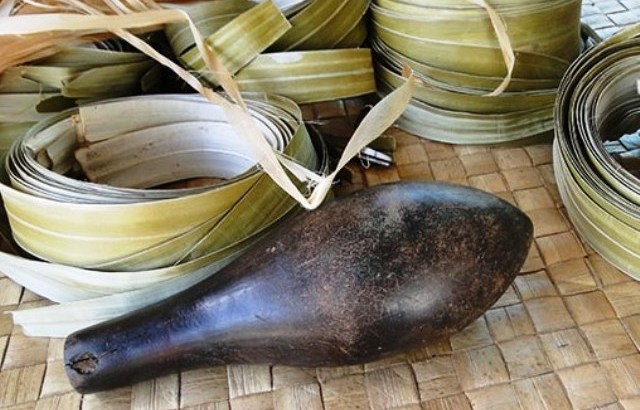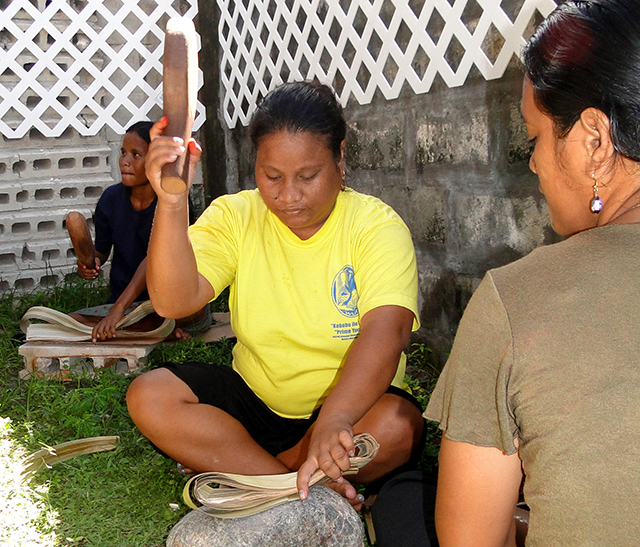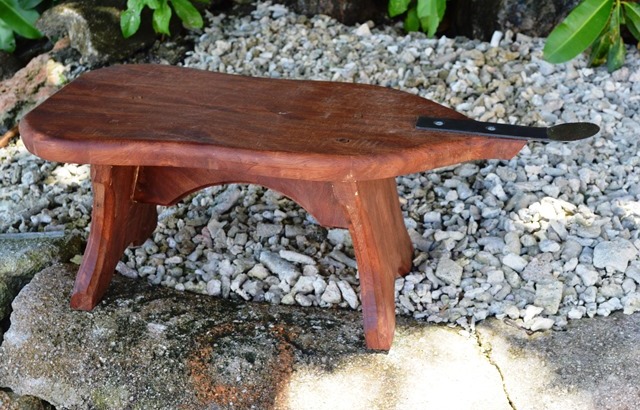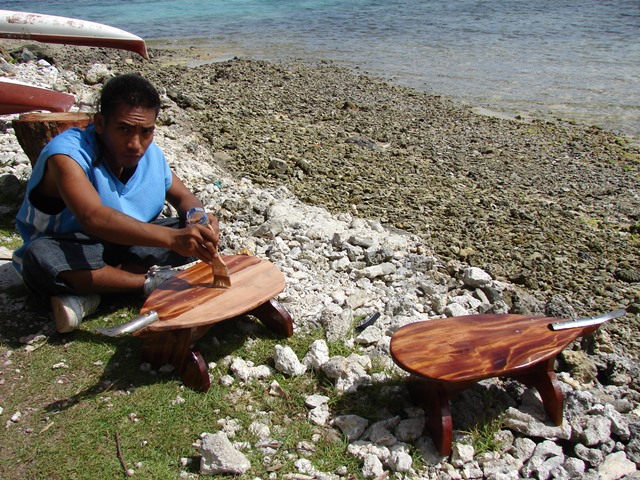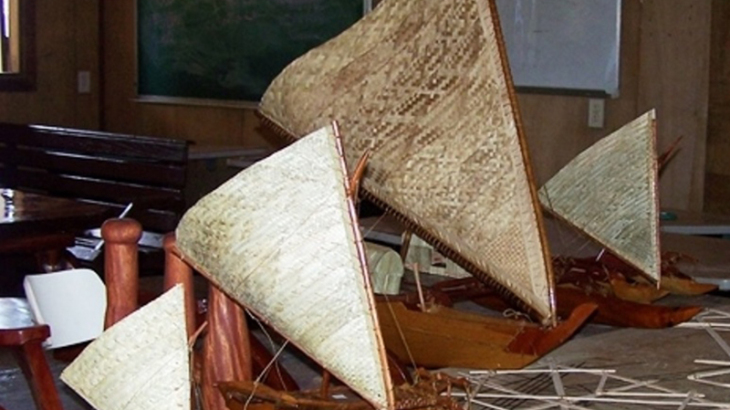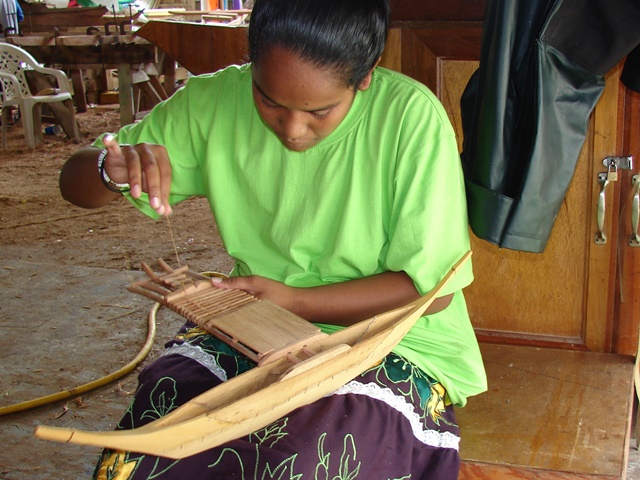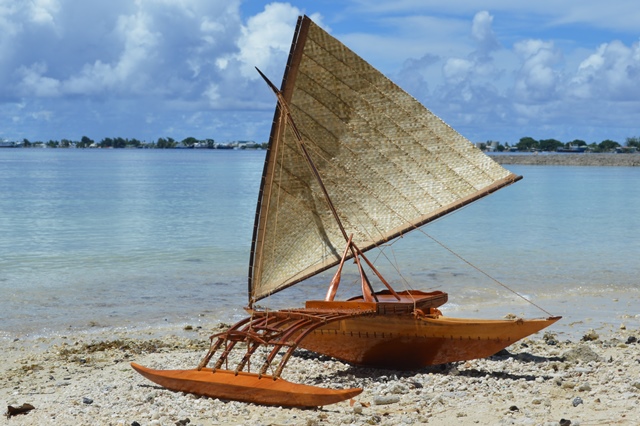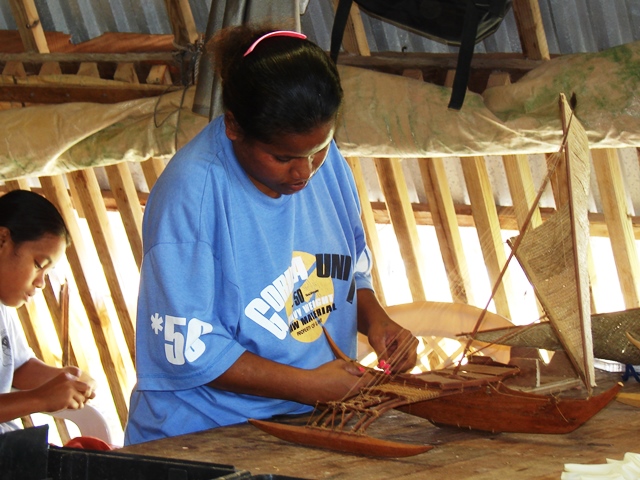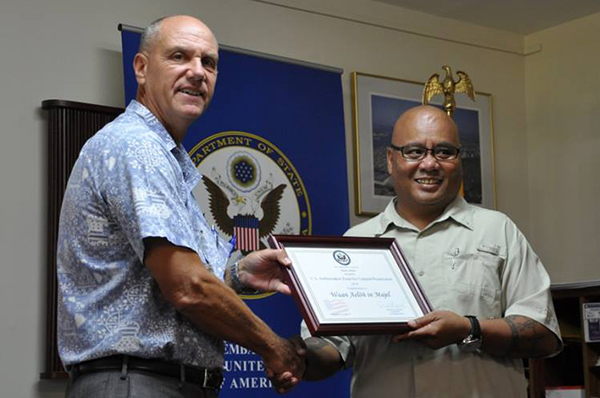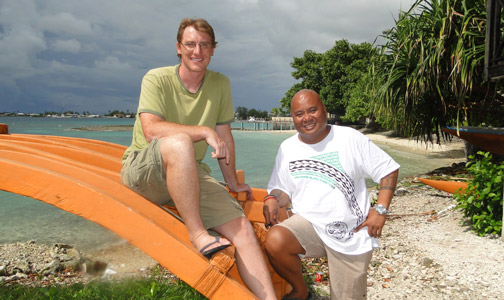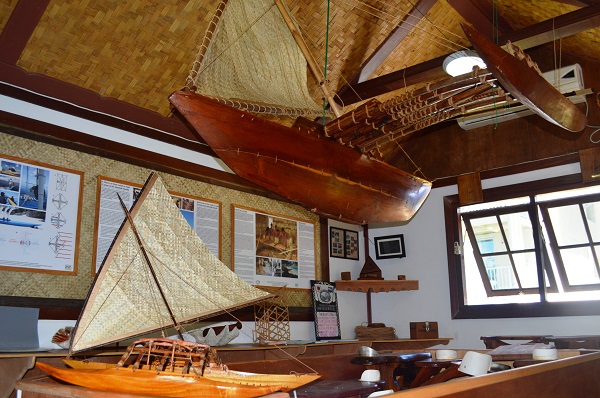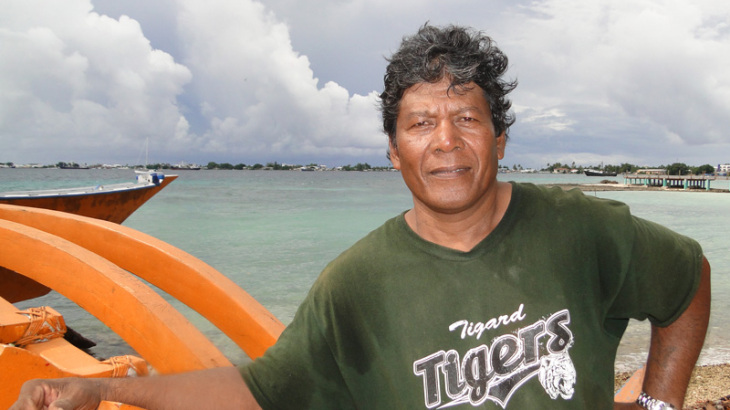The next key stage of the traditional Marshallese navigation revival project that began in the early part of the last decade is now being planned by Waan Aelon in Majel Director Alson Kelen, expert navigator Captain Korent Joel, and anthropologist Joe Genz. Having researched, re-enacted, and documented much of the uniquely Marshallese skill of navigating using the wind and wave patterns, the trio is now working out how best this important cultural knowledge can be passed on to a new generation of sailors. Karen Earnshaw reports.
In the early days of Waan Aelon in Majel, more often known as WAM or the Canoe House, when Dennis Alessio and his recruit Alson Kelen were eagerly working on tapping into the knowledge of the Marshalls’ master canoe builders, American Joe Genz arrived on the scene.
“I had been in the Peace Corps in Samoa in the late 1990s, where I became interested in traditional navigation.” This transformed into a fascination that led to meet the University of Hawaii’s Ben Finney, who was a co-founder and first president of the Polynesian Voyaging Society. “Ben took me on as his last student in 2001,” explained Joe as he sat in WAM’s upstairs office.
“Ben had already been in conversations with Dennis and Alson about reviving the Marshallese skill of navigating, and he asked me if I would be interested in assisting in the project.” First he spent two months on Ailuk to begin learning the language and about the culture. “It was full immersion and very effective, especially as no-one really spoke English.”
Joe went back to university, finished his master’s degree, and began preparing for his PhD in anthropology, returning to RMI in 2005 to work for a year with the twin goals of researching Marshallese navigation techniques and assisting with the revival aspect of the WAM project.
“Our starting point was going with Captain Korent to his home island of Rongelap. He wanted to start talking about how he learned navigation as a child. On Rongelap he took us to a reef that simulates the water patterns. This was where he began his lessons in navigation from his grandfather.”
At this time, the only master navigator alive was Thomas Bokin of Ujae. “But in addition to Thomas and Captain Korent, there were six other experts in navigation, primarily from Rongelap, including Isao Eknilang,” Joe said. “And they weren’t all men. One was Lijon Eknilang, Isao’s younger sister.” Of these eight, three have now passed on, including Lijon.
“Of course the secrets of the skills of navigation are still very much under traditional chiefly control and there are strong regulations controlling the dissemination of this knowledge,” Joe explained, adding, however, that there is a general perception that there is a need to keep the skills alive and that this can really only happen with an ongoing training program.
“So, for example, it was okay for Captain Korent to take Alson on as a novice, because Alson is from the same family.”
Alson and Joe worked with the elders for a year. During this time, Joe organized for the deployment of a ‘wave buoy’ in many locations around Majuro and Arno. “We used this scientific instrument to try to understand and document how the waves can be used for navigation.” Joe’s year in RMI culminated in using a yacht loaned by two guys from Kwajalein to test Captain Korent’s skills.
“On that first voyage in 2006, we sailed 120 miles from Kwajalein to Ujae and back, and the captain made it with no navigational help from any of the devices on board the yacht Mali. “A bonus of this voyage was that while we were in Ujae Captian Korent spent a lot of time talking stories with Thomas the navigator. Another important note is that for Captain Korent it was his ‘ruprup jokur,’ which means ‘breaking out of the turtle shell’ or, more plainly, his coming of age as an expert navigator. He would have earned this earlier on, in Rongelap, but the movement of the people back when he was young had disrupted this step.”
Joe left RMI again to continue his PhD — which he achieved in 2008 — returning to do more research in the summers of 2007 and 2009. “Our intention was to do another voyage to test the navigation skills, this time using a large voyaging canoe, but each time there was no wind. The whole place was completely becalmed.”
Finally, in 2010, Alson successfully sailed WAM’s big canoe to Aur. There were six crew on board. “Captain Korent was on a chase boat, ready to give navigational guidance via radio to Alson if and when he needed assistance.”
In 2012, Joe was hired as an Assistant Professor in the Department of Anthropology at the University of Hawaii at Hilo and this allowed him to apply for funding to continue the navigation project with Alson. This includes a grant from the United States Ambassador’s fund. “I am here now to work out how we can best continue the program,” Joe said. “We still don’t have all the answers on how to read the waves, but we feel the most important thing is the passing on of the skills.
In Hawaii, a similar process of connecting to the past led to the building of the famous double-hulled canoe Hōkūleʻa, which has just now embarked on a three-year voyage around the world to raise awareness of environmental stewardship.
“Alson’s idea as of now is to organize a voyage next summer that will include novice navigators, who will be chosen with great care and using the correct channels, with the ultimate hope of reviving the voyaging canoes as a means of sustainable water transport.”
